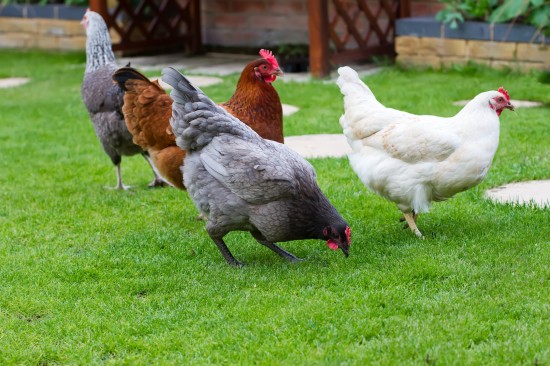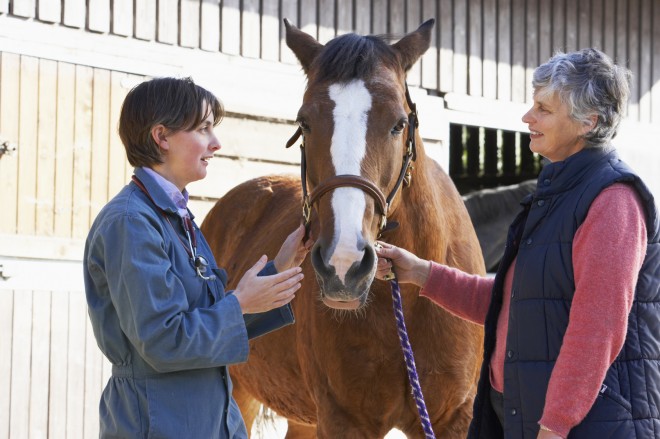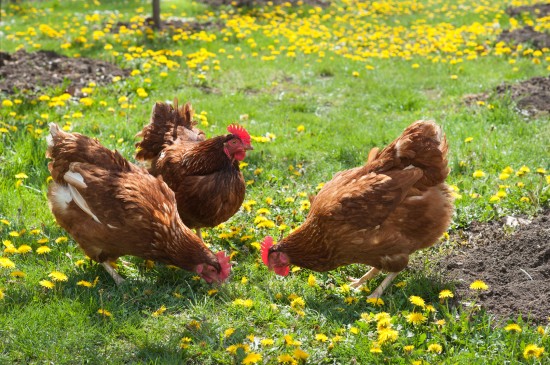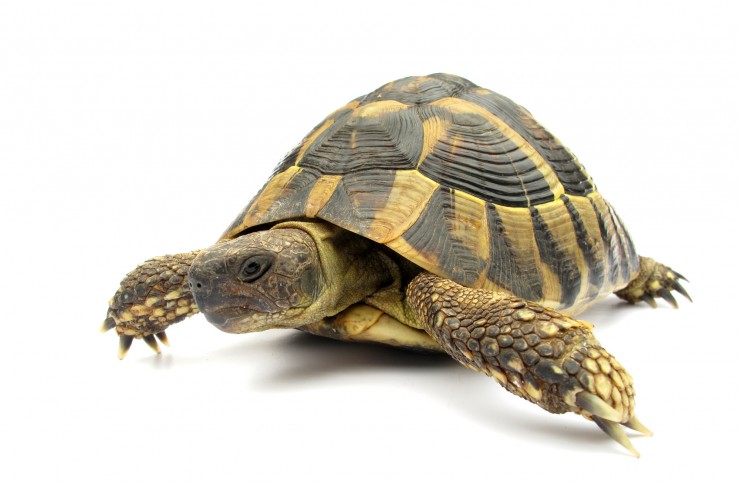

Chickens are becoming increasingly popular as pets, and are now a more frequent sight in suburban gardens as well as in rural areas. They are delightful, intelligent creatures, and provide a whole lot more than just a source of delicious fresh eggs for their owners. As well as secure housing, good nutrition and appropriate veterinary care when required, they will also benefit greatly from what is known as “environmental enhancement / enrichment”. This term describes the care we are able to take in providing more than the bare minimum needed in terms of health and welfare; it encompasses all those little extras that help promote ultra happy hens.
Chickens that don’t have the benefit of an enriched environment may well be at risk of behavioural problems resulting from inadequate exercise, mental stimulation and boredom, which can include pulling out their feathers excessively and egg eating. In a worst case scenario, cannibalism has even been known.
Hens require a secure coop in which to roost at night, lay their eggs and take shelter in bad weather. They also need plenty of room to exercise and indulge in their natural behaviours. Most chickens are kept in an enclosure as they can be destructive in the garden and will eat whatever takes their fancy, not just weeds. The enclosure should be large enough to hold their coop; and allow them to run, stretch their wings and scratch – all very important activities for hens. Some breeds like to fly and roost high in trees.
Some suggestions to improve the outdoor environment for chickens are:-
1. If your chickens are kept in a relatively small run, then make sure it is possible to move it around the garden so that one piece of land does not become overly soiled, and they will have fresh grass and soil to explore once the existing area has been used. The original land can then recover if the run is rotated in this way. If it’s possible, and there are no toxic plants* the chickens can access, then why not let your chickens out of their run to free range from time to time under supervision allowing them a greater area to explore.
2. Ensure that the run is high enough to allow the birds to stretch, jump and fly. If there are no trees or bushes in the run, then set up some roosts made from large branches. Creative chicken owners who are good at carpentry could even try making some platforms at different heights that can hold treat dispensers and other goodies. A swing made from rope and a branch is another super idea. Cat and dog feeding toys can easily be utilised, or you can buy special designs for poultry. An ideal position for a chicken run is around an old tree, so that there is scope for roosting, and the foliage will also provide shade in the warmer weather. Don’t choose an oak tree though, as both the leaves and acorns are toxic to chickens.
3. Chickens generally love each other’s’ company, but do be watchful of their behaviour. There’s a very real reason for the term “pecking order”, and some hens may pick on others and this will require your intervention to prevent injuries. This is most likely to happen at feeding times, so for this reason it’s wise to feed your chickens several times a day and use more than one feeder so that the shyer chickens can still eat their fair share without being bullied. Be careful not to offer excessive amounts of food though, as leftovers may encourage vermin.
4. Chickens love to preen and enjoy dust baths. They will usually select certain areas of dry soil to dig out their own special areas for this, but if the land they’re accommodating is small or mostly paved, a tyre filled with earth makes an ideal dust bath. Diatomaceous earth or a little ash added to the soil may help deter mites.
5. The chicken’s main diet of layers pellets will usually be served in feeders specially designed for this purpose to allow several chickens to gather round and eat together. The feeder usually has a cap or hood to keep the pellets dry in the rain. Other foods such as mixed grain however can be thrown directly on the ground and this will encourage the hens to scratch and exercise. Tasty treats such as mealworms, crickets and safe veggie scraps can be fed in this way too. Most chickens; if handled regularly; will become tame enough to come and eat from your hand.
6. A really good way to encourage your chickens to keep active is to hang veggie heads such as cabbage, broccoli and spinach up high enough so they have to hop to reach them.
7. Chickens enjoy human company as well as that of their feathered friends, so do be sure to spend extra time with them, as well as that you usually spend cleaning their coop, egg collecting and feeding. Regular handling is great for them as you can check for any ailments, and in the event of a poorly chicken, she’ll be much easier to handle when administering medication or transporting her to the vet. Chickens are curious about new things, so even if you don’t have anything different to provide to them, you could feed them in a different area.
8. A compost pile is ideal for your chicken run as it provides both food and entertainment. There will be plenty of insects to find and savour, and as well as enjoying the digging, the decomposing material is also a heat source. The compost pile’s presence may also reduce destruction elsewhere.
9. Chickens have surprisingly good colour vision, so you may like to provide them with some coloured balls to play with. They also like reflective items such as a heavy duty mirror or some hanging CDs.
*Some plants which are toxic to chickens include lilies, hyacinth, yew and rhubarb leaves. These are just a few examples of the many garden hazards that your chicken may be at risk from, so do your research and make sure your chicken run is safe and free from plants which are harmful to your hens.
 Adopt A Shelter Pet – What Steps Do You Need To Take?
If you and your family are looking to adopt a new pet for yo
Adopt A Shelter Pet – What Steps Do You Need To Take?
If you and your family are looking to adopt a new pet for yo
 Golden Retriever Puppies The Perfect Pet
Golden Retriever Puppies The Perfect Pet
Are
Golden Retriever Puppies The Perfect Pet
Golden Retriever Puppies The Perfect Pet
Are
 6 Signs Of Sacroiliac Disease In Horses
6 Signs Of Sacroi
6 Signs Of Sacroiliac Disease In Horses
6 Signs Of Sacroi
 Keeping Chickens On A Budget
Keeping Chickens
Keeping Chickens On A Budget
Keeping Chickens
 Cites And The Advertising Of Endangered Pets
Cites And The Adv
Cites And The Advertising Of Endangered Pets
Cites And The Adv
Copyright © 2005-2016 Pet Information All Rights Reserved
Contact us: www162date@outlook.com